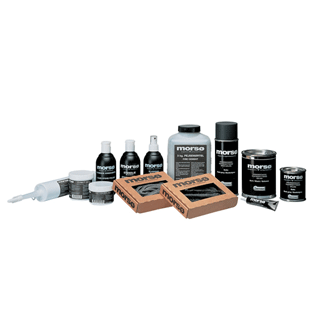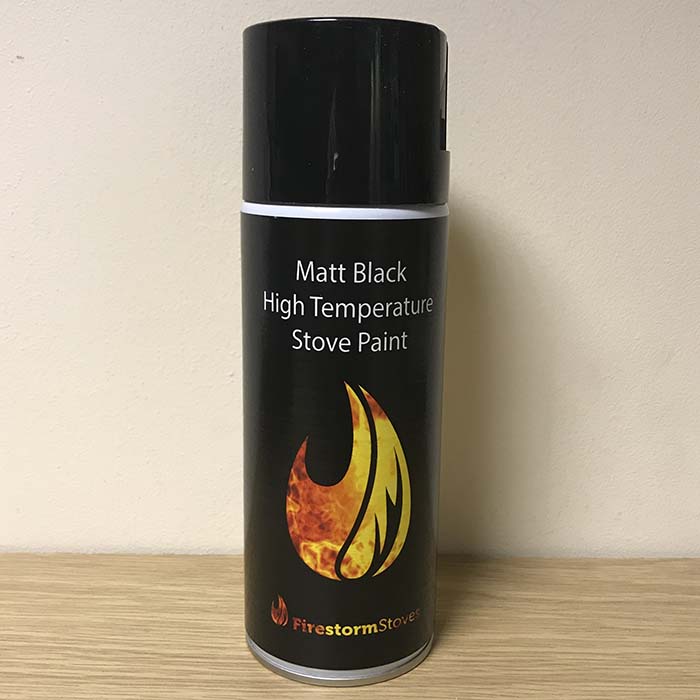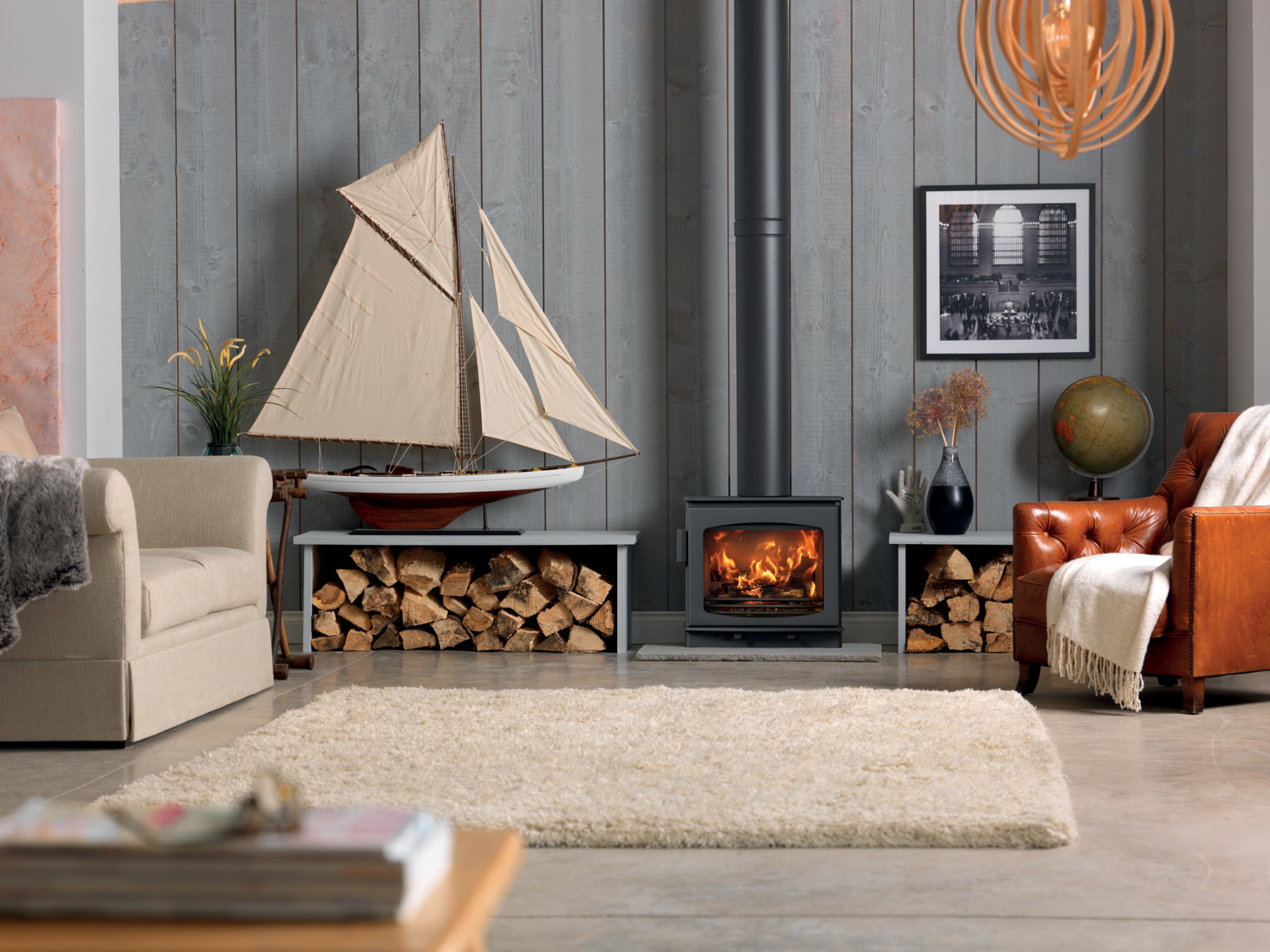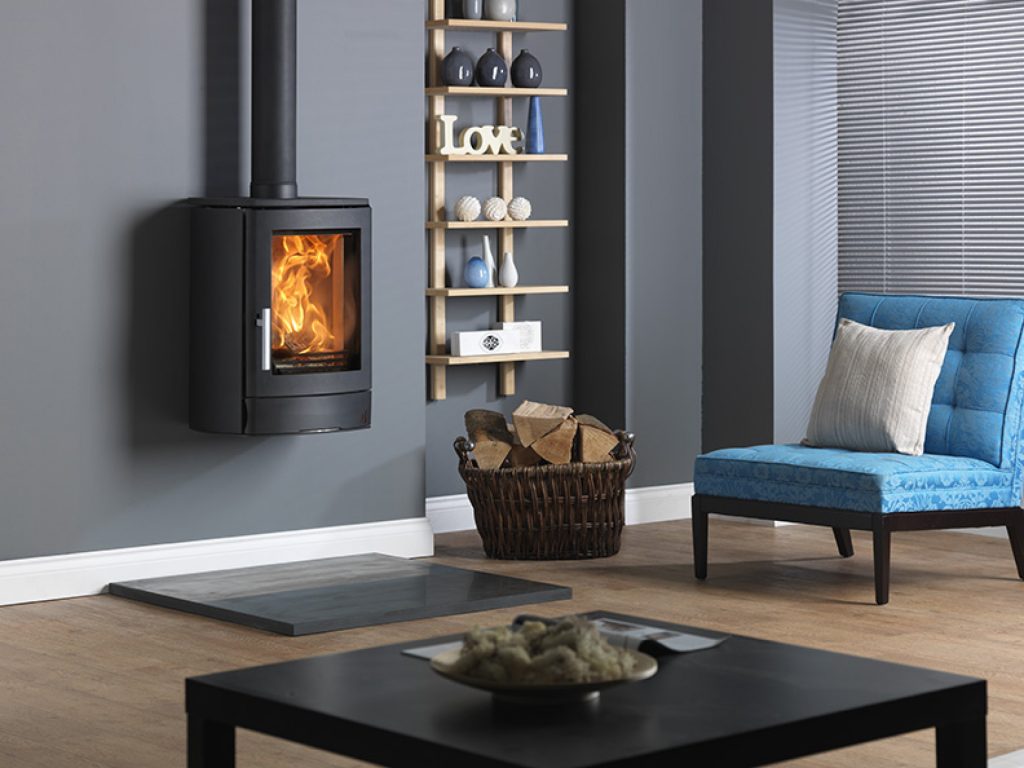Aside from the traditional means of maintaining your stove’s efficiency, such as using the correct fuel, there are other ways in which you can ensure maximum efficiency going forward. As with the vast majority of efficiency tips, they are relatively simple but the cumulative impact can be significant, increasing heat output and saving you money.
Cleaning your stove
Whether you have a wood-burning stove or multifuel stove, it is imperative that you keep the inside and the outside clean. We know from experience that soot can very quickly build up in areas such as the throat plate, fire bricks and the gasket doors. It is therefore helpful to clean these on a regular basis and replace elements which have been worn or damaged.
Many people use a wire brush to clean soot from the inside of their stove. It is useful to pay particular attention to the variety of small inlet holes as well as the fire bricks to ensure they are not coated with soot. When cleaning it is also a good idea to check your flue pipe for a buildup of tar/soot and to ensure that the seals are still safe and sound. This simple cleaning process helps maintain maximum efficiency, the safe exit of fumes and above all a greater heat output.

Chimney sweeping
Wood-burning stove maintenance is one thing but many people fail to sweep their chimneys on a regular basis. While many people ask how to clean a wood-burning stove chimney this is not something you should attempt without a degree of experience. In many cases it is sensible to use the services of a fully qualified competent chimney sweep. They will have the correct equipment; right sized brushes and ensure that your chimney is thoroughly clean.
There is a growing consensus that it is also sensible to clean your chimney just prior to installing your stove and within a month of regular use. Many flue pipes have an access door built-in which allows you to remove debris and check for blockages. There will be occasions where you will be able to see debris which has fallen down the flue and amalgamated next to the stove flue exit pipe. If left, this debris can eventually lead to major blockages in the flue pipe and the release of potentially harmful emissions into your home.

Cleaning stove glass door
When you bear in mind the stove glass allows you to watch the flickering flames and the burning embers, this should be kept clean at all times. There will be certain situations where the glass is blackened often due to the burning of damp wood or perhaps after being left to burn overnight. Cleaning stove glass is relatively simple. You need to wait until the machine is cold, open the door and then simply clean the glass from the inside using stove glass cleaner. Some people also use a damp cloth dipped in vinegar and wood ash to clean glass without scratching it. The difference a clean stove glass door will make to the ambience of your room will astound you!

How to clean a wood-burning stove exterior
There will be times when the exterior of your wood-burning stove/multifuel stove will look a little tired and perhaps dirty. It may be that the paint is chipped, rust is showing through or it just needs a general clean. Once your stove has cooled down, you should rubdown the exterior with a damp cloth which will remove loose dirt and loose paint. Even though the paint used on wood-burning/multifuel stoves is manufactured to accommodate extremely high temperatures, it does have a natural shelf life. This can be reduced in the event of moisture on the surface of your stove which can in time encourage rust. Thankfully, the vast majority of stove manufacturers have array of simple aerosol paint cans which you can use to “touch up” the exterior of your stove. It is also important to get the right colour for your stove and the correct type from the stove manufacture.
In the unlikely event that the whole exterior of your stove could do with a refreshed layer of paint, it would be useful to remove items such as the door and tape up elements which should not be painted such as brass handles, etc. There is no point putting new layers of paint on cracked paint, so ensure everything is smooth and dislodge damaged paintwork.

Storing your stove for the summer
If you are lucky enough to enjoy relatively hot weather in the summer time then it is sensible to take precautions when storing or not using your stove. First of all, ensure your stove is clean and all moving components are in good order. Many people will administer a layer of lubricant which not only ensures continued movement but also protects the surface. There is an argument to suggest that elements such as the throat plate should be stored outside of your stove when not in use for a prolonged period of time.
There is also the potential problem of moisture which can cause serious complications with your stove. Many stove enthusiasts will leave the air wash and primary air inlets at least half open to ensure the constant circulation of air. Others tend to leave the door slightly ajar which has the same affect and helps to reduce the buildup of moisture. It is easy to forget these simple measures when your stove is not in use only to find out as winter approaches that there are issues.

Conclusion
Simple maintenance of your wood-burning/multifuel stove can have a major impact on performance, heat production, durability and stove efficiency. Addressing issues in the relatively early stages, such as rust, can avoid complications further down the line. Many may be surprised, but one of the major challenges for stoves is moisture and condensation which can cause all kinds of problems.

